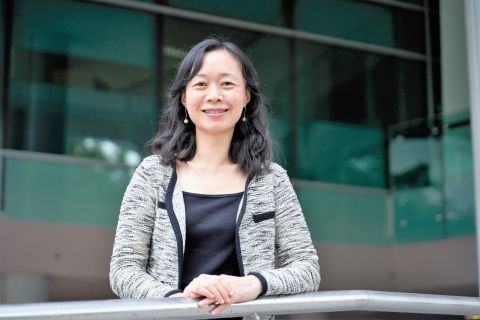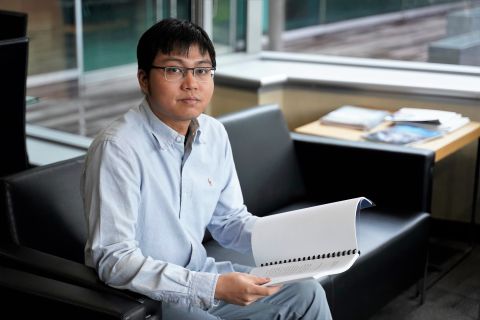
By Jeremy Chan
SMU Office of Research & Tech Transfer – Amid fears of automation replacing human labour, companies are still seeking out talented individuals to perform key business functions. Given the high cost of churn – or employee turnover – within an organisation, human resource managers are becoming increasingly selective in their assessment of potential candidates. Hiring is considered a hefty investment in human capital, and employers expect to reap a return on each headcount.
While an individual’s curriculum vitae or résumé allows a company to directly evaluate educational background and hard skills, personal characteristics can typically only be gleaned through in-person interviews. Even then, an accurate picture of compatibility may not emerge.
Seeking to improve talent acquisition processes is Professor Filip Lievens, Lee Kong Chian Professor of Human Resources at Singapore Management University (SMU), who knows very well the hiring techniques used by companies. He assesses their talent acquisition and assessment approaches, and innovates new ones as part of his research.
“My area of expertise deals with how companies best attract talent and how they should design assessment approaches to ensure that the attracted human capital pool creates a human capital advantage. Due to their impact on workforce quality and diversity, talent acquisition and talent assessment are of pivotal importance to organisations,” he says.
A fine balance
When designing a hiring process, getting the level of stringency just right can be tricky. For instance, one might design a selection process that is rigorous and valid, but applicants may find the experience unpleasant, and this could have a negative impact on the brand or reputation of the organisation, Professor Lievens explains.
Diversity is another aspect of hiring that employers are increasingly paying attention to. People of different genders, ethnicities, ages and backgrounds sharing a workspace not only strengthens a company’s culture, but also allows better representation of a company’s client base, which could lead to improved productivity and performance.
Furthermore, society has become more judgemental of companies that consciously or subconsciously bias against a particular population demographic. When choosing the right hiring framework, companies therefore need to balance their criteria for technical aptitude and fit with the job or company against other factors like diverse representation.
Professor Lievens notes that there are often trade-offs when it comes to different hiring strategies, hence his research aims to help companies clarify which ones to pursue for strategic impact while being unbiased to potential candidates.
The case for ‘speed dating’
With the increasing demand for 21st-century skills such as interpersonal adaptability, agility and innovation, Professor Lievens argues that traditional hiring approaches like interviews, tests and questionnaires are beginning to look dated. Instead, he highlights situational judgement tests (SJTs) and multiple speed assessment as useful strategies to get candidates to display actual behaviour related to these 21st-century skills in controlled settings, which can then be scored and ranked objectively.
Both webcam SJTs and multiple speed assessment involve simulation and role-playing, where prospective employees are presented with scenarios they may encounter at the company. The assessor thus has multiple opportunities to observe how an individual reacts in a job-relevant context. In a recent study, Professor Lievens set up such a speed assessment in which candidates went through 18 three-minute role-plays. A criteria-based scoring system was then used to evaluate the individual’s performance.
“Interestingly and importantly, we discovered that trained assessors were able to judge important personality traits accurately after just three minutes of having an applicant simulate a job task, with significant overlap in applicant ratings by assessors that had 30 minutes to judge these same applicants,” Professor Lievens explains.
“This runs counter to common thinking that our first impressions contain a lot of biases and are always inaccurate. It also goes against common wisdom that lengthy assessments should be the standard. But let’s be clear: we do not suggest replacing lengthy assessments with ‘speed dates’ of a couple of minutes. These are complementary techniques. And we do need multiple speed assessments per candidate.” Many organisations that do large-scale assessments are interested in this new fast-paced technique, which also appeals to the new applicant generation, Professor Lievens adds.
Professor Lievens published his recent discoveries on speed assessment approaches in the Journal of Applied Psychology, in a study titled ‘A dual-process theory perspective to better understand judgments in assessment centers: The role of initial impressions for dimension ratings and validity’; his 2017 lead article in the European Journal of Personality, titled ‘Integrating situational judgment tests and assessment centre exercises into personality research: Challenges and further opportunities’, covers the underlying fundamentals of SJTs and speed assessment more broadly.
Getting smart about hiring
Just as diversity is deemed desirable in the workplace, a diversity of assessment methods for hiring can also be valuable for organisations. Even as Professor Lievens dissects the intricacies of SJTs and multiple speed assessments, which are manual in nature, he believes that more technology-centric, automated strategies will emerge in the future.
“I envision that two trends will revolutionise the domain of talent assessment: gamification and artificial intelligence,” he says, adding that organisations are already using algorithms to screen the social media accounts of candidates, as an individual’s ‘likes’ and ‘shares’ on Facebook and Instagram reveal clues about his or her personality and interests.
“The question then arises – do we really need to keep using tests and inventories in the coming years? I’d say that the solution is probably a ‘best of both worlds’ approach, combining information that has been extracted by computer algorithms with other information that we obtain through traditional inventories, tests and face-to-face assessment approaches,” he says.
Hence, there will always be a need to analyse and compare different talent acquisition strategies, in varying combinations. A one-size-fits-all solution is unlikely to exist, so companies will have to rely on evidence provided by researchers like Professor Lievens to decide which methodology best suits their needs.
“There is some pivotal recent research showing that talent acquisition and assessment not only impact individual performance but also firm performance. This should convince higher and top management to keep investing in talent acquisition and assessment,” says Professor Lievens.
Back to Research@SMU February 2019 Issue
See More News
Want to see more of SMU Research?
Sign up for Research@SMU e-newslettter to know more about our research and research-related events!
If you would like to remove yourself from all our mailing list, please visit https://eservices.smu.edu.sg/internet/DNC/Default.aspx

